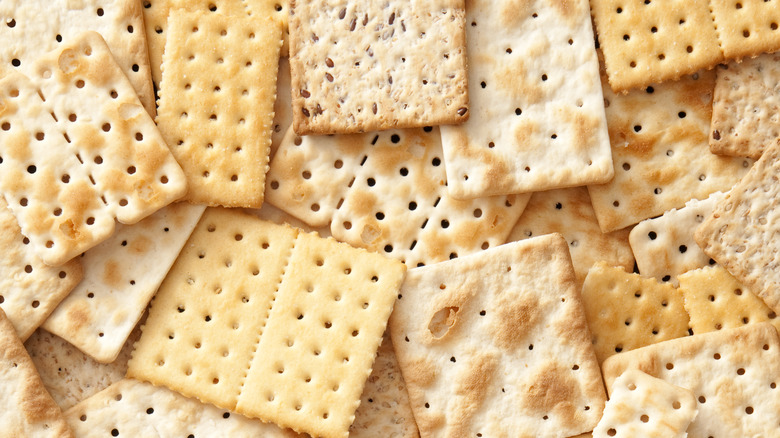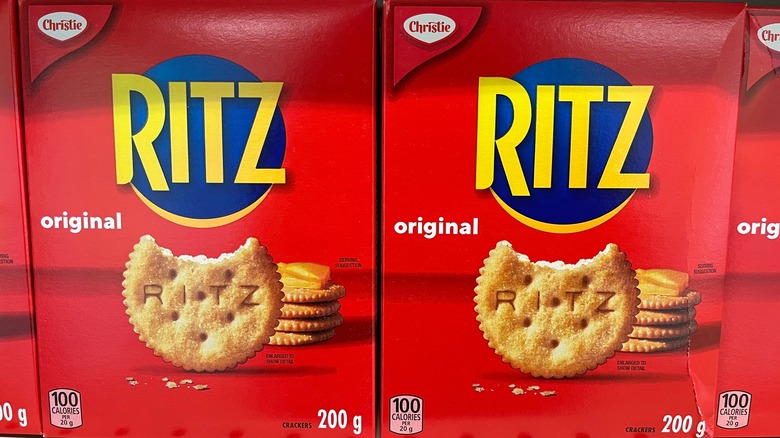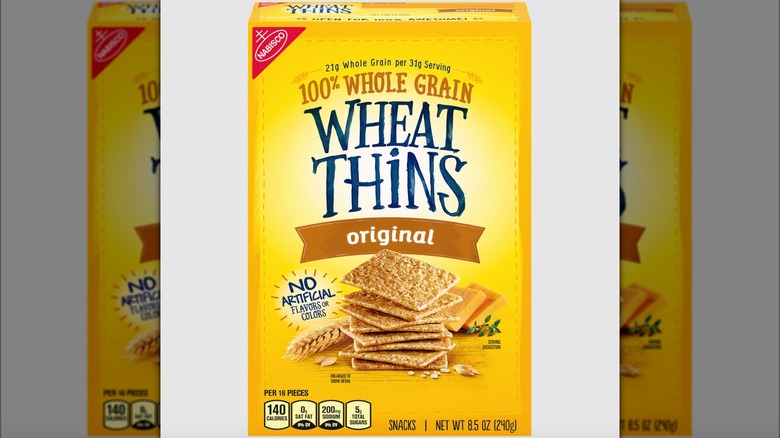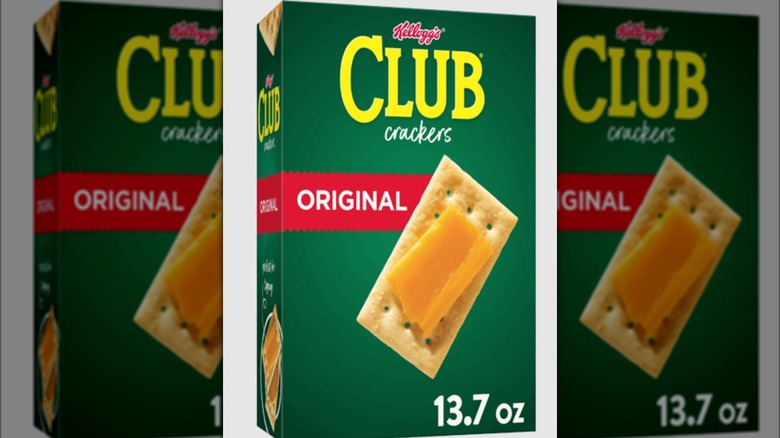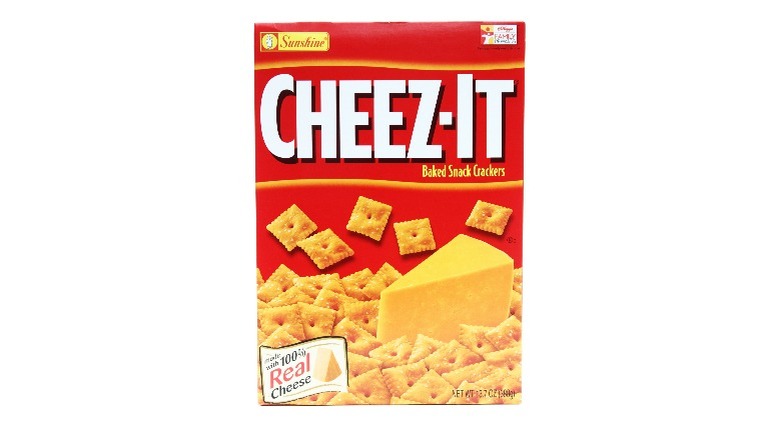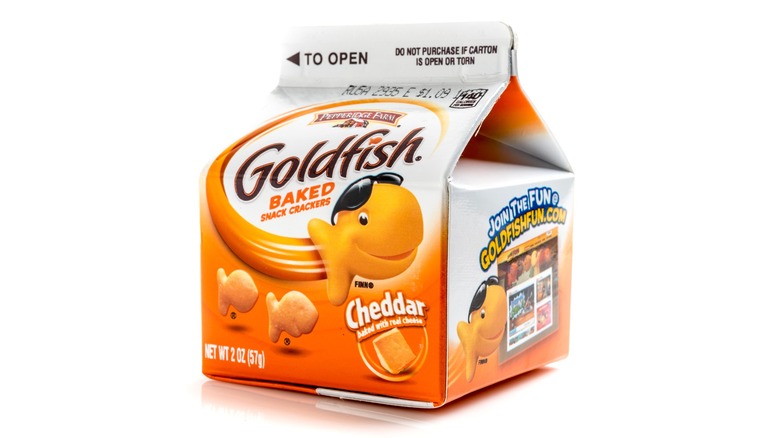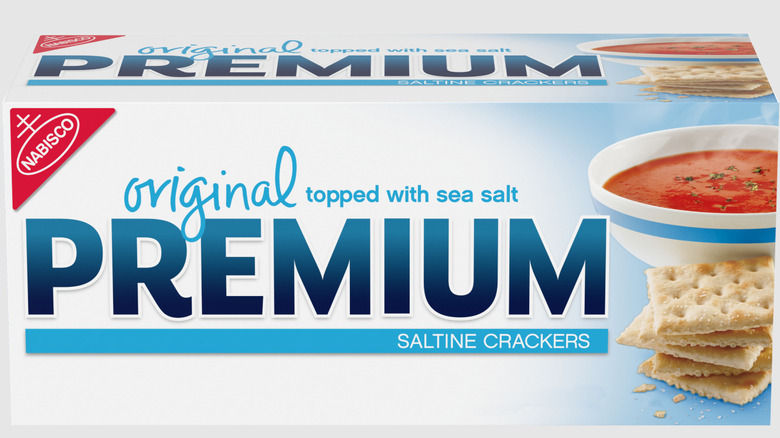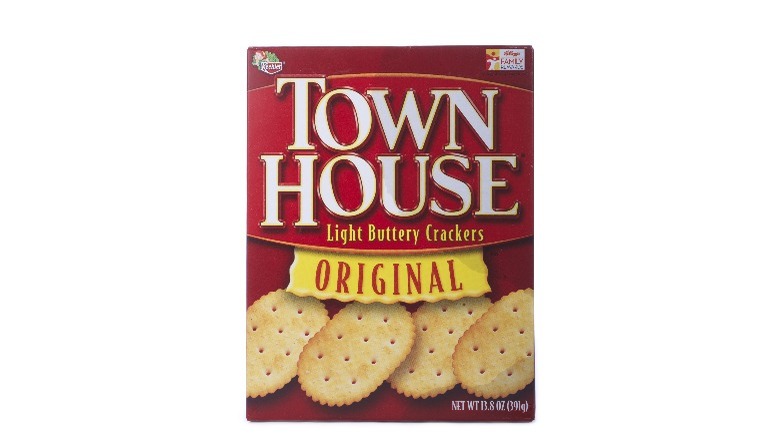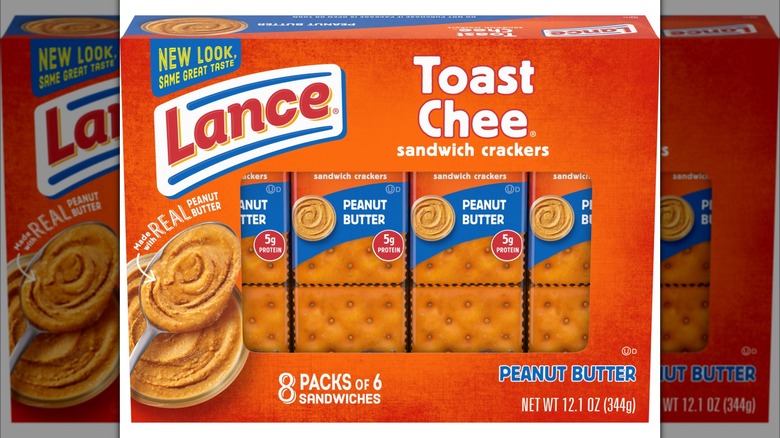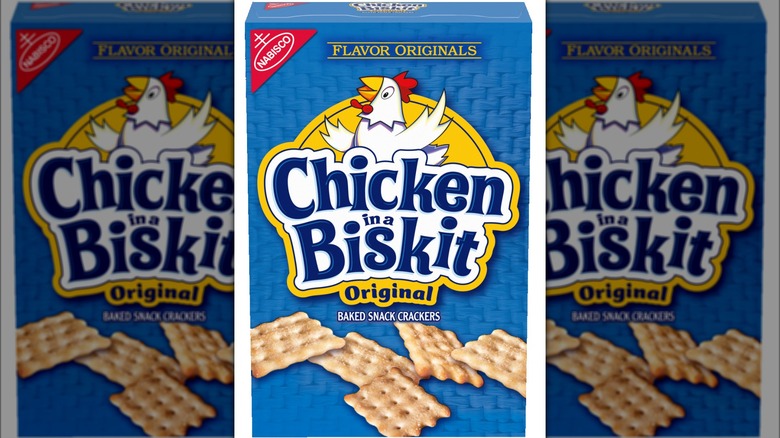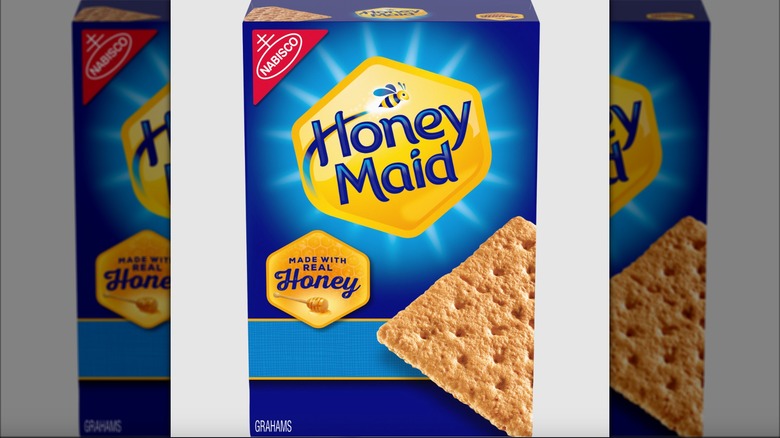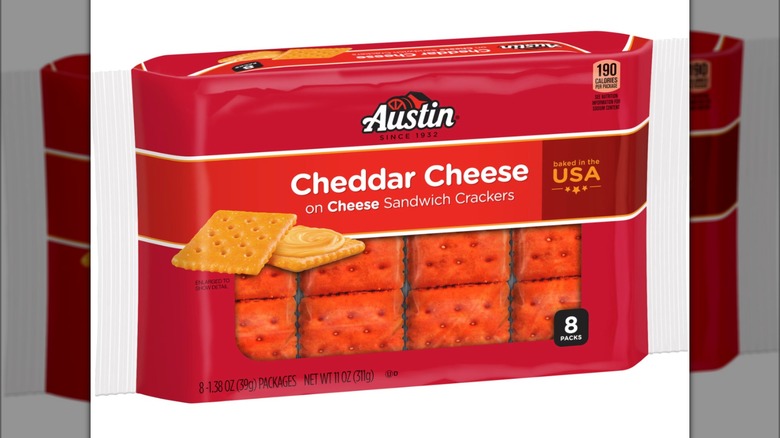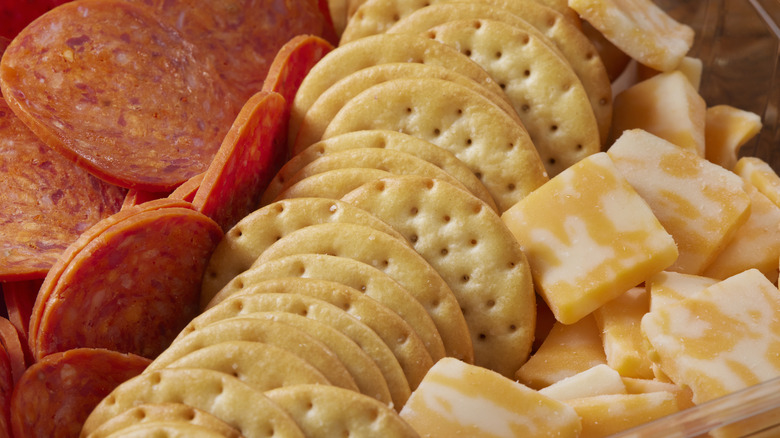11 Unhealthiest Crackers You Can Buy
When we browse the aisles of our local grocery stores, we often look for snacks that promise convenience without compromising our health goals. Crackers, a snack beloved by many for their versatility and satisfying crunch, are a staple in many pantries. They can be used on a charcuterie board, as a way to add crunch to homemade breading, or simply as a snack all on their own. However, not all crackers are created equal.
In the interest of prioritizing common health goals when strolling the cracker aisle, we've delved into the nutritional content, ingredients, and processing methods of some of the most popular cracker brands to help you make more informed choices.
Our goal is to provide a clear, fact-based assessment of why these might be some of the more unhealthy cracker options on the shelves. Of course, it's important to remember that everyone's nutritional goals are different. This list is meant to guide those who, in general, want to avoid things like excess sodium, calories, sugar, and highly processed ingredients. By breaking down these products to their nutritional content and comparing those facts to recommended daily nutritional guidelines, we aim to highlight information that can help health-conscious cracker fans to make better choices and maintain a more balanced diet.
1. Ritz Original Crackers
Ritz Original Crackers are a familiar sight in many households, known for their buttery flavor and flaky texture. This brand is a classic for a reason; for many, the flavor and crunch is unmatched compared to other brands of crackers. However, health-wise, Ritz isn't the best option out there. Each serving of Ritz Original crackers, which amounts to five crackers, contains 80 calories, 4.5 grams of fat, 10 grams of carbs, and 130 milligrams of sodium. While these numbers might not seem alarming at first glance, it's the type of fat and the lack of nutritional value that are concerning, as well as the unrealistic serving size. Ritz crackers are made with soybean or canola oil, as well as palm oil, which has a sometimes spotty untold truth. Furthermore, they contain high fructose corn syrup, which doesn't offer any substantial nutritional benefits.
Compared to a healthier cracker option that might use higher quality ingredients, Ritz Crackers fall short in providing no dietary fiber or any significant amount of essential nutrients. Alternatives that utilize whole ingredients and minimal processing typically offer more vitamins, minerals, and fiber, supporting overall health rather than just satiating a quick snack craving.
2. Wheat Thins Original Whole Grain Wheat Crackers
Wheat Thins Original Whole Grain Wheat Crackers are often marketed (and perceived) as a healthier cracker choice due to their whole grain content and the brand's claim that they are made without any artificial flavors or colors. A closer look at the ingredients and nutrition labels shows that Wheat Thins are still something people should look out for when trying to live a healthier lifestyle. A single serving of Wheat Thins (16 crackers) has 140 calories, 5 grams of fat, and a surprisingly high 200 milligrams of sodium. While these crackers include whole grain wheat flour as their first ingredient, they also contain canola oil, sugar, malt syrup, and preservatives, which arguably diminish their overall nutritional potential. The sugar content in Wheat Thins — around 5 grams — is admittedly lower than many sweetened snacks but still contributes to the crackers' overall calorie count without adding beneficial nutrients.
The 200 milligrams of sodium per serving is noteworthy because it accounts for about 9% of the FDA-recommended daily limit of 2300 mg. Regularly consuming high-sodium snacks can lead to long-term health issues like elevated blood pressure. Additionally, while Wheat Thins offer 3 grams of fiber per serving, this is relatively modest for consumers who might be looking to maximize their dietary fiber intake for digestive health. Other crackers on the market provide more fiber with fewer additives, no sugar, and less sodium.
3. Club Original Crackers
Club Original Crackers, known for their light, buttery texture and hint of saltiness, provide a distinctly rich taste that can be quite tasty. These are mainstays for cheese and cracker enthusiasts and are a great choice for making homemade breading for things like chicken fried steak. Each serving of Club Original, which is four crackers, has around 70 calories, 3 grams of fat, and 125 milligrams of sodium. These nutritional facts are not over the top when you consider one serving size. However, people typically consume way more than four crackers at a time.
In terms of how Club crackers are made, the primary ingredients include enriched flour and soybean oil, which contribute to the crackers' appealing texture but offer little nutritional value. Moreover, the use of enriched flour means that most of the natural vitamins and minerals that are present in whole grains are lost during processing (admittedly, this factor isn't unique to Club crackers).
Additionally, Club Original crackers contain sugar via high fructose corn syrup. Although it's minimal in quantity here, high fructose corn syrup still contributes to one's sugar intake. For those managing their weight or who have health conditions related to blood sugar levels, it is important to consider these additional ingredients that offer few health benefits but can significantly impact your metabolic health. Healthier alternatives would be those that use only whole grains, natural oils, and are free from added sugars.
4. Cheez-It Original Snack Crackers
Cheez-It Original Snack Crackers are a popular choice for those craving a cheesy, salty snack. It's common to see Cheez-It crackers in lunch boxes and vending machines. Although these crackers are undoubtedly delicious, the nutritional information and ingredients on the package may give some health-conscious consumers pause. Each serving of 27 crackers delivers 150 calories, 8 grams of fat, 1.5 grams of saturated fat, and 230 milligrams of sodium. The main ingredients of Cheez-It crackers are enriched flour and real cheese made with skim milk, but these crackers also include vegetable oil and additives like tertiary butylhydroquinone, or TBHQ. The fat content in Cheez-It crackers is partially saturated, stemming from the use of cheese and palm oil, which can pose health risks if consumed in large quantities.
A significant concern with Cheez-It crackers is the snack's sodium content. At 230 milligrams per serving, they contribute to nearly 10% of the recommended daily 2,300 milligrams limit of sodium. While Cheez-It crackers provide a decent amount of calcium (30 milligrams), the high amounts of saturated fat and sodium begin to overshadow this benefit, making them less than ideal for frequent consumption.
5. Goldfish Crackers
Goldfish Crackers are a popular snack known for their playful shapes and cheesy flavor. Each rather hearty 55-piece serving has 140 calories, 5 grams of fat, 1 gram of saturated fat, and 250 milligrams of sodium. Although Goldfish are a modest option in terms of caloric intake compared to serving size, they offer limited nutritional benefits.
One of the main concerns with Goldfish Crackers is sodium, with 250 milligrams of the stuff per serving, representing a significant portion of your daily recommended intake. The primary ingredients of these crackers are enriched wheat flour, cheddar cheese, oils, and salt. For healthier alternatives, you might consider snacks that are lower in sodium and made from whole grains that retain more fiber and nutrients, which can then help to better support digestive health and provide longer-lasting energy. Additionally, snacks seasoned with natural herbs and spices instead of salt can offer flavorful alternatives that help cultivate a palate for less salty foods.
6. Premium Original Saltine Crackers
Premium Original Saltine Crackers have long been a go-to for pairing with soups, topping with cheeses, or eating alone when you're not feeling well. Yet these iconic crackers pack more sodium than one might expect. Each serving of five crackers contains 60 calories, 1.5 grams of fat, and 135 milligrams of sodium. Primarily made from enriched flour, soybean oil, palm oil, and salt, these crackers are low in nutritional value, offering zero fiber and few essential nutrients.
The sodium content in Saltine Crackers raises particular concerns, especially given their common use with already sodium-rich foods like soups and processed cheeses. This combination can lead to a significant intake of sodium. Additionally, the enriched flour in these crackers means that most of the natural grains have been heavily processed, removing valuable nutrients such as fiber. The lack of fiber and the high glycemic index of refined flour can lead to quicker rises or even spikes in blood sugar.
For a healthier alternative, consider choosing low-sodium cracker options or those made from whole grains. Whole grain crackers not only offer more nutrients and fiber but also help in maintaining more stable energy levels between meals.
7. Kellogg's Town House Original Crackers
Kellogg's Town House Original Crackers are often chosen for their light, buttery texture, making them a popular choice for serving with dips and cheeses. Each serving of five crackers has 80 calories, 5 grams of fat, 1 gram of saturated fat, and 140 milligrams of sodium. Additionally, Town House crackers are made with ingredients such as enriched flour, soybean oil, TBHQ, sugar, and corn syrup, which contribute to the unique flavor and texture of this snack but aren't exactly nutritional powerhouses (though at least soybean oil contains heart-friendly polyunsaturated fatty acids).
The sodium in Town House crackers, although not the highest on this list, can still contribute significantly to daily sodium intake limits when consumed regularly. Likewise, the enriched flour base spells reduced fiber and nutrient content. Additionally, the added sugar from corn syrup contributes to increased sugar intake without doing much to boost the cracker's nutritional benefits.
8. Lance ToastChee Peanut Butter Crackers
Lance ToastChee Peanut Butter Crackers are a classic that cracker fans probably remember from childhood. These sandwich crackers combine peanut butter filling with two cheesy crackers which, although tasty, they don't offer an abundance of nutrition. These crackers, offered in packages of six sandwiches, have 220 calories, 10 grams of fat, 2 grams of saturated fat, and a whopping 320 milligrams of sodium per package. The peanut butter filling adds 5 grams of protein but also significant amounts of added sugars (5 grams) and fats.
These crackers are particularly calorie-dense and high in fats, which can be concerning for those monitoring their caloric intake or who are managing their fat consumption. A better choice might be to source snack crackers that combine whole grains with natural nut butters, which offer a greater portion of healthy fats and proteins without added sugars or highly-processed hydrogenated oils.
9. Chicken in a Biskit Original Baked Snack Crackers
Chicken in a Biskit Original Baked Snack Crackers are known for their unique chicken flavoring, something not offered in other cracker brands. Despite being a one-of-a-kind flavor experience, these crackers are not the healthiest on the market. Each serving of 12 crackers delivers 160 calories, 8 grams of fat, half a gram of saturated fat, and 230 milligrams of sodium. The main ingredients in Chicken in a Biskit crackers include enriched flour, soybean and/or canola oil, and a mix of seasonings that mimic chicken flavors, including sugar, salt, onion powder, dehydrated cooked chicken, celery spice extract, monosodium glutamate (MSG), and artificial flavors, which may raise health concerns for some consumers.
The high sodium content and the presence of MSG make these crackers less suitable for those with high blood pressure, though what you may not know about MSG includes the fact that concerns about its health effects have often been overstated and misunderstood. Additionally, the use of enriched flour and artificial flavors suggests a low nutritional value.
10. Honey Maid Honey Graham Crackers
For many, no campout or picnic is complete without Honey Maid Honey Graham Crackers, a brand often chosen for its sweet flavor and crunchy texture. Although graham crackers make for an excellent addition to s'mores, they aren't the healthiest option for consuming regularly. A serving of two full cracker sheets contains 130 calories, 3 grams of fat, 130 milligrams of sodium, and 8 grams of added sugars. These crackers are made from unbleached enriched flour, whole grain graham flour, sugar, soybean and/or canola oil, and honey.
Despite their whole grain content, those 8 grams of sugar and the relatively high sodium in two sheets of crackers makes Honey Maid less than ideal for frequent consumption. While they provide more fiber than many other crackers on our list, the added sugars contribute to increased caloric intake and potential spikes in blood sugar levels. You can seek out graham crackers made with less sugar and more whole grains, offering the benefits of fiber without potentially excessive sweeteners.
11. Austin Cheese Crackers
Austin Cheese crackers are a sandwich-style snack that feature a cheese filling between two cheesy crackers. Famously offered in vending machines across the U.S., Austin crackers are an iconic snack. One package of Austin Cheese crackers contains 130 calories, 6 grams of fat, 1.5 grams of saturated fat, and 250 milligrams of sodium per package. The primary ingredients include enriched flour, whey, sugar, a blend of soybean, palm, and palm kernel oil, TBHQ, and cheese made with artificial coloring.
These crackers are high in both fat and sodium, which may lead to increased blood pressure and a higher risk of cardiovascular diseases. Additionally, the use of artificial colors like yellow 6 (which has gotten some cereals banned in other countries) may turn some consumers away. Healthier snack options would avoid those artificial additives and potentially incorporate whole grains and natural cheese, providing better nutritional benefits and arguably fewer health risks.
Methodology
When making our list of the most unhealthy crackers on the market, we examined nutrition and ingredient labels. Nutritionally, we evaluated things like sodium content, sugar levels, and the types of fats used. These elements are crucial as they directly impact long-term health and overall wellness.
In addition, we considered the ingredients used to make the crackers. The inclusion of ingredients like refined flours and lack of whole grains diminish the nutritional value of many commercially available crackers, as do the presence of artificial additives and preservatives.
Now, there's nothing wrong with the occasional treat, but if you are consuming crackers regularly, you may want to consider finding a healthier brand.
